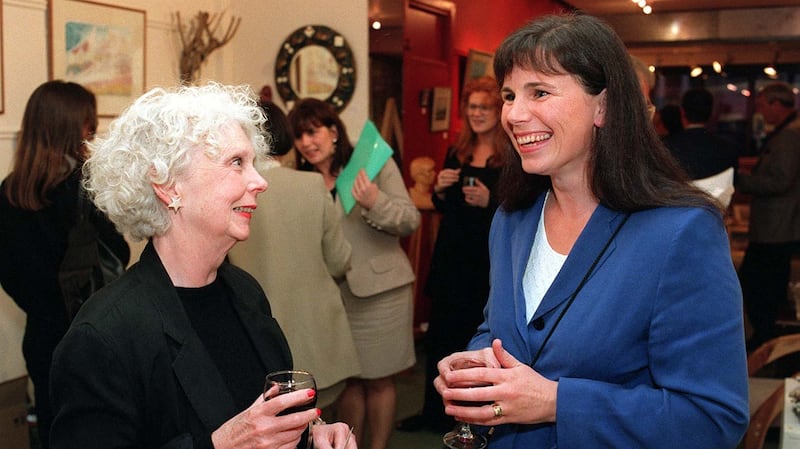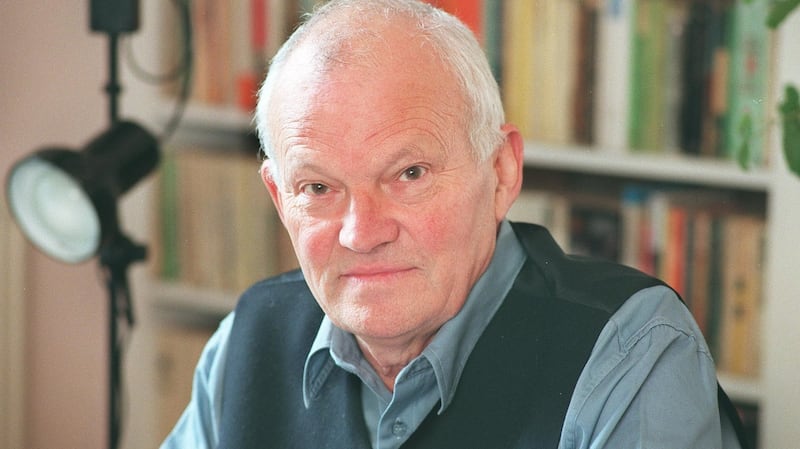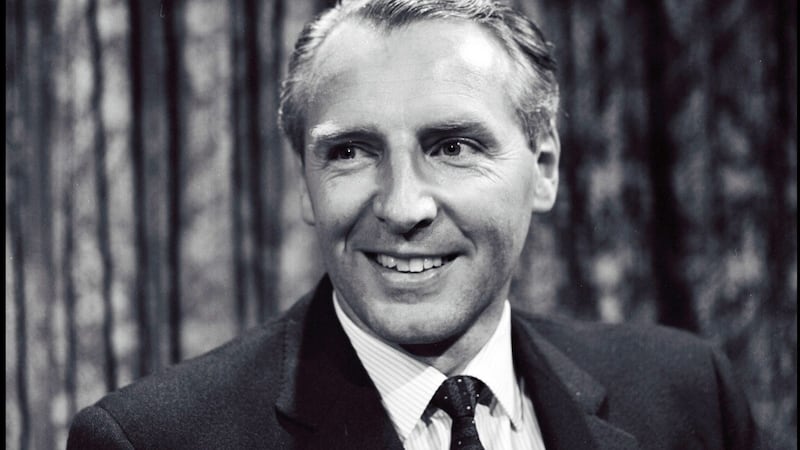Before there was a D4, Heytesbury Lane was a stretch of derelict mews to the rear of Waterloo Road, set in the remains of an apple orchard. When I moved here over 50 years ago it was unlit, unremarked, home to a horse and a handful of people. Although it has become, as the estate agents say, a “sought-after address within easy walking distance of city centre”, newer residents go from car to gate to mews, seldom setting foot in the laneway, leaving me to walk with the ghosts of long-gone neighbours.
I know more ghosts on Heytesbury Lane now than real people. They look just as ghosts are said to look – wispy, grey, transparent. Rustling like cellophane they take shape, rise to walk with me down the lane towards the promise of blue hills at the westward end.

Richard Kingston, the artist, is talking with Peter Cahill the boat captain – and here, walking slowly, is the old man who speaks Irish with his wife. Ask him “how are you?” and he will answer “poorly, thank God”, signalling his acceptance of “what is”.
There’s a light behind the Kearney sisters’ door. They left it ajar for friends. And here’s Dr Chapman, on his way home from the Royal City of Dublin Hospital on Baggot Street. Now ivy fastens the hospital’s fine front doors. The doctor’s mews is up the lane. Was there a small creamery up there too? The long table in my dining room might have been theirs. Its metal tab reads: The Dairy Engineering Company of Ireland, Nos 21 & 22 Bachelor’s Walk, Dublin.
When I reach the mews that was Vivette’s before she went back to Jamaica, she is just coming from the shops. She’s wearing a hat and gloves and is accompanied by her maid. The maid is white and Vivette is black. The maid carries a basket. There’s a single chop in it and a handful of parsley.
Mr Footy, the panel beater, hurries by. His shop is up the lane where an orange light spills into the gathering grey mist; he keeps a fire burning in an oil drum. Paddy Harris lives up there too, sharing his mews with his horse and cart. Step aside for “Mr Whoopee” clattering by on his motorbike. (He shouts “whoopee” as his side car rattles on the ridged tarmacadam.) Hear the squealing of the doomed pigs arriving in a lorry to await tomorrow behind worn and weathered wooden gates.
Initials carved in a stone wall...JP/MH. Jack’s and mine. Almost invisible inside the ghostly trace of a heart. Enter the mews through the weaving shed. Wesley Burrowes built it for his Swedish wife before they moved to Bray in Co Wicklow. I’ll write this in the corner of the kitchen where Wesley created Glenroe. Jack and I watched it every week on our black and white TV. Gone now.


Further down the darkening lane – the street lights still seem new to me – a door closes behind Brian Cleeve. The thick blue bottles he unearthed behind his mews glimmer in his window. Once Brian saw Christ on the lane “small and dark”. Cleeve may be dead – he is dead – but he’s still here.
Perhaps the same may be said for Christ.












